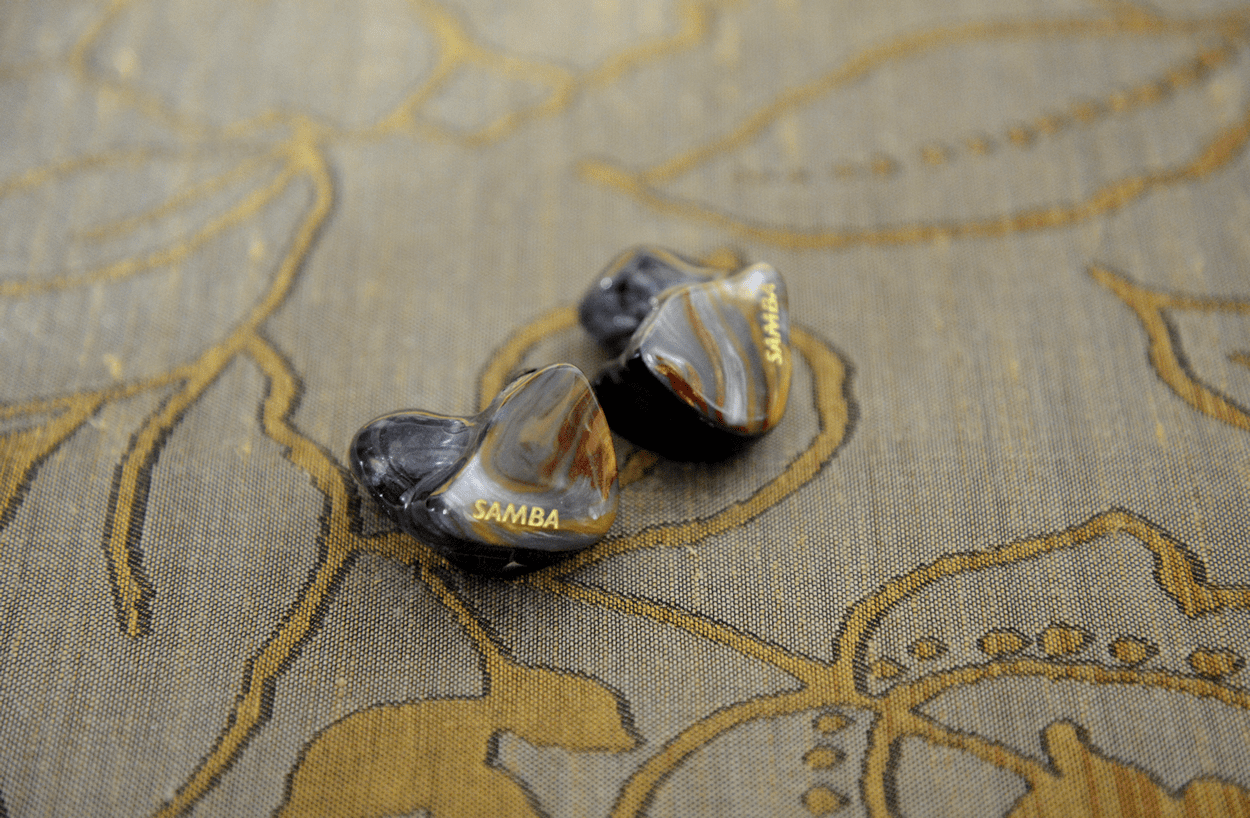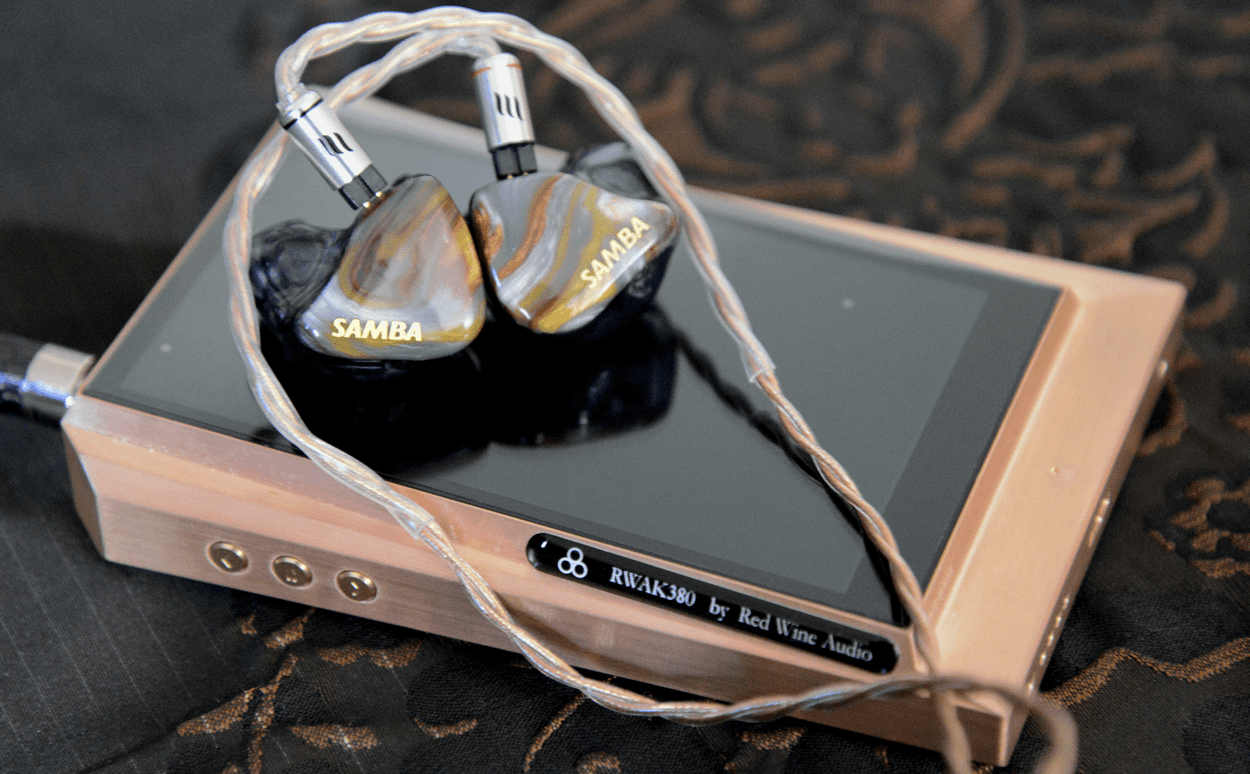Comparisons
Campfire Andromeda ($1099)
Campfire’s Andromeda is easy to listen to, and easy to like. It’s more of a ‘fun’ tuning, compared to the precision-oriented Samba. The exception is in sub-bass rumble, where the Samba delivers more power. It has tighter and more impactfull sub-bass. Andromeda has a more forward, warmer, and thicker midrange. Especially male vocals benefit from the additional lower midrange fill, although vocals sound slightly clearer with Samba. Samba’s notes are slightly leaner, though more neutral and uncolored in tonality. Andromeda has just a little bit more sparkle in the upper midrange, compared to the more neutral Samba.
Andromeda’s treble is thicker, while Samba’s has better definition. Both are enjoyable in a different way, with Andromeda’s being more engaging, but the Samba’s offering more precision and detail. They share a similar treble tonality, being slightly more prominent than completely neutral, although Andromeda’s is a bit more forgiving of bad recordings with brighter sources. Both share a high quality stage, large in all dimensions. However, the Samba offers a cleaner instrument separation in accordance to the leaner notes and airier stage, while its imaging is more precise.
Lime Ears Aether (€1100)
While both the Aether and Samba can be considered a variation of neutral, their tuning philosophy results in a different focus. The Aether’s focus is naturalness, with a warmer and more colored midrange, and smoother treble. With its variable bass switch, it has similar sub-bass impact as Samba in its upper position, but with a greater emphasis on mid-bass. This creates a warmer and smoother sound, and vocals are reproduced with more emotion. On the other hand, the Samba’s stage is consequently cleaner due to the tighter bass. Even in the Aether’s low bass position, the Samba’s bass is tighter and more controlled.
The Samba is a reference-oriented version of neutral, characterized by a tighter yet impactful bass, and an uncolored midrange. While the Aether has a beautiful tonality, the Samba has a more accurate reproduction of instruments due to the lack of coloration, and greater transparency. Piano and string instruments are purer, more true, compared to the thicker and warmer notes of the Aether. In addition, the Samba’s treble is more precise and articulate, although it is less smooth. This also results in more precise imaging. Both have a nice stage with good separation, although the Samba’s stage is larger and cleaner in comparison. Taken together, the Aether sounds more natural for easy-going band oriented or rock music, while the Samba offers a more accurate recreation of instruments for classical and jazz, while its precision makes it more suitable for electronic music.

Earsonics S-EM9 ($1490)
EarSonics offers its own variation of a neutral signature, albeit with a more pronounced U-shape. Both share a nice bass presentation, although the Samba’s sub-bass is more impactful. The S-EM9 in turn has slightly more mid-bass emphasis, though both have a controlled and quick bass response in common. Both share a relatively neutral midrange, although the S-EM9’s is slightly more colored in comparison. While Samba’s upper midrange remains neutral and uncolored, the S-EM9 has EarSonics’ trademark dip, making it smoother, but also sacrificing a bit of sparkle and clarity. In addition, this makes the Samba’s midrange more full and slightly closer in comparison. While both have a good technical presentation of the treble and a similar tone, the Samba’s decay is quicker.
The Samba has a larger stage, especially in width. Both offer good depth to the presentation, but due to the stage dimensions, the Samba offers a more effortless separation. Both perform very well when it comes to precision of imaging. With their stock cables, the Samba offers a cleaner stage, with an advantage in instrument definition. With a similar cable, the two come closer in price as well as technical performance.
Rhapsodio Solar ($1550)
Both the Samba and Solar have a powerful sub-bass rumble, that really knocks at the door when called upon. The Solar adds a hefty mid-bass, that adds warmth and fullness to the presentation. Accordingly, the Solar creates thicker notes; the Samba on the other hand is more neutral and cleaner, with an airier stage and greater transparency. The Solar’s upper midrange is also more laidback compared to the Samba, and the combination with the warmer sound makes it smoother overall, while the Samba offers more clarity and definition. This continues in the treble, where the Samba’s treble is slightly more prominent. The Solar in turn has a more natural treble tone. Both offer a great deal of precision in the treble tuning.
Both iems have a nice open stage, with well-proportioned width, height, and depth. Additionally, the instrument positioning and imaging is both excellent. Their main difference is the result of the Solar’s warmer mid-bass response; the Samba has a noticeably cleaner stage, with greater emphasis of subtle details. Overall, the Solar is warmer, thicker, and smoother, though less accurate in its tonality and precision. The Samba has greater resolution, transparency, as well as stage airiness.
Concluding thoughts
Jomo’s previous former flagship, the 6R, was tuned with a reference signature in mind; aiming to be a viable alternative to iems as the UERM. With the Samba, Joseph is continuing in the same direction. A neutral signature, with a focus on technical abilities as clarity, resolution and separation. If I’d had to describe the Jomo in two words, it would be clean and organized; an accurate, high fidelity reproduction of music. Often, manufacturers might add a bit of warmth or size to make a midrange more impressive, or make it brighter to enhance detail. While this works for some genres like pop or rock, it affects the purity of an instrumental presentation, the tones of a piano or string instruments.
It is somewhat sensitive and source dependent though; with a brighter dap, such a signature can come across as dry and analytical, while it will present itself as more musical and natural with a neutral to warmer dap, though retaining its reference precision. As is, the Samba might not have the most emotional or lush midrange, it’s not a signature that shouts for attention; but its reference tuning offers a benchmark for flat and uncolored sound – a level of accuracy I’ve seldom come across.





2 Responses
Thanks, honestly all three are excellent options. Andro is allround and engaging, Samba is quick and accurate, and Zeus-R is a smooth variation of a neutral tuning.
Thanks for the detailed review. I’m considering this along with the Ando and Zeus-R but prices wise, might settle for Andro but I would probably love the sub-bass of the Samba.